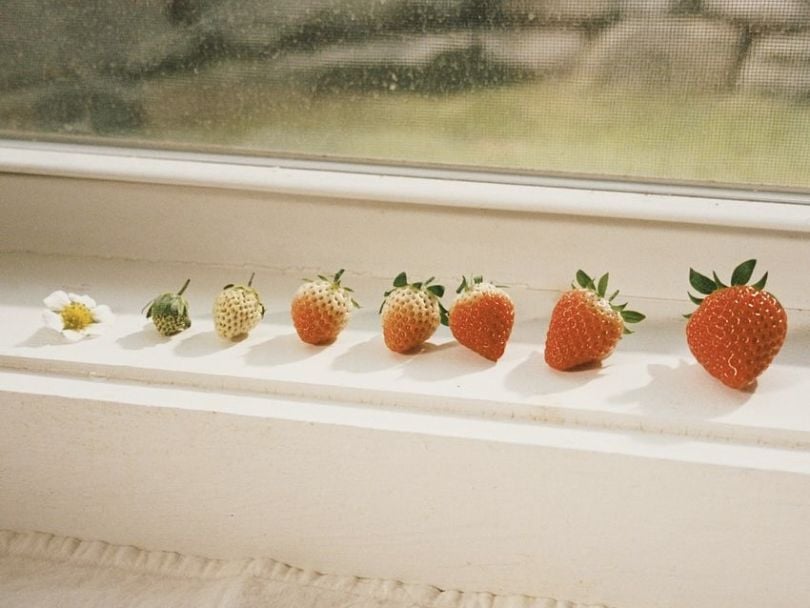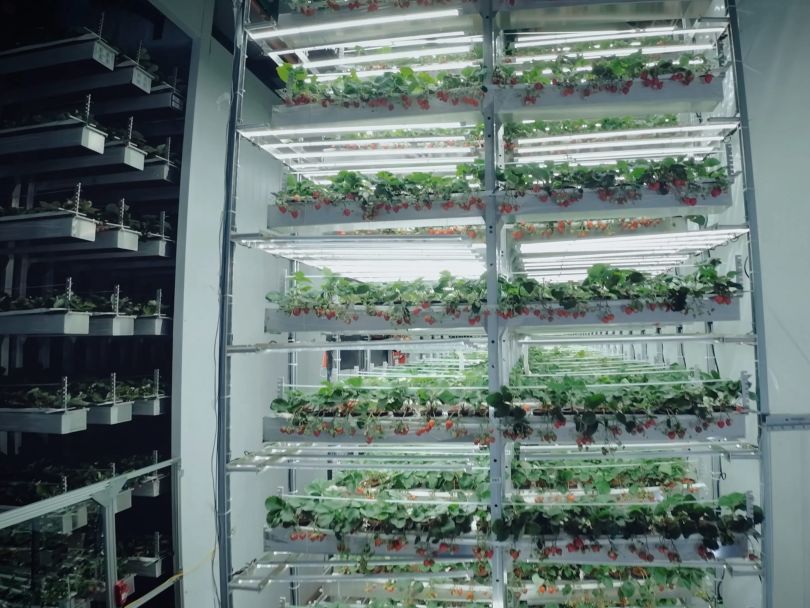Adjacent to a sprawling solar field in Phillipsburg, New Jersey, 237,500 square feet of precision-tended strawberry plants stretch under high-tech skylights. In the filtered sunlight, cutting-edge robotics and a multi-million dollar water purification system produce the perfect berry, every time.
This vertical wonder is called Ametelas, named after the mythical Japanese sun goddess.
Oishii is the world’s largest indoor strawberry farm — the behemoth garden is striving to change the produce industry and raise the standard of fresh fruit by combining nature and technology at commercial scale.
In 2018, Oishii introduced its Omakase Berry, an artisanal strawberry celebrated for its sweetness, aroma and creamy texture. 2023 brought the Koyo Berry and Rubi Tomato. And this year, Oishii has continued its pace of progress with the launch of Ametelas, its largest farm yet.
Built In sat down with VP of Engineering Andres Camerena to learn more about it, and what it means for the future of farming.
Oishii is transforming agriculture while bringing produce that delights people everywhere.
What is a product your team is excited about?
Amatelas is Oishii’s newest and most sophisticated indoor strawberry farm. It leverages renewable energy from a massive 50-acre solar field, recycles water efficiently and incorporates multiple levels of automation. Our AI-enabled harvesting robots are especially eye catching.

Why did Oishii build Amatelas? What gave rise to it, and what impact will it have on the Oishii and its customers?
Our previous facilities have proven that we can grow best-in-class strawberries using indoor farming technologies. Now, the challenge is keeping up with demand. Amatelas is the flagship facility for our newest technologies. Research and development of every one of our subsystems has resulted in farm units that are more sustainable and scalable. With Amatelas, we will be able to reach several new regions and increase our list of valued customers.
What role did you play in developing and launching Amatelas?
I lead the software, controls and mechanical engineering teams. My teams focus on developing our farm unit systems. Once our designs are ready for deployment, our construction branch takes over and figures out how to build them at scale.
At Oishii, we are designing and building farms unlike any others in the world. That said, there is no off-the-shelf solution for what we are doing. We rely on partners to provide solutions to problems that have already been solved, but much of our secret sauce comes in the form of custom, home-brewed solutions.
“Much of our secret sauce comes in the form of custom, home-brewed solutions.”
One example of this hybrid approach is our robotic harvesting system. We leverage off-the-shelf, six-axis robots for the movement, but everything downstream is developed by us. We’ve created our own custom tooling, vision processing pipelines, AI algorithms and on-premise computing infrastructure.

What obstacles did you encounter along the way? How did you overcome them?
The speed and scale at which we develop farms at Oishii is impressive. This presents challenges at every phase of a project’s execution. In order to deliver on our ambitious timelines, we have built specialized teams that allow us to execute efficiently. On the design side, we have distinct functions when it comes to development, procurement, construction, commissioning and maintenance. Within development, we have a dedicated team for each key subsystem, including HVAC, mechanical, robotics, electrical, controls and water processing, to name a few.
What teams did you collaborate with in order to get this across the finish line? What strategies did you employ to ensure that cross-functional collaboration went smoothly?
Launching an indoor farm is tricky. The commercial team has to be ready for when production starts, farm operations have to have plants ready when the farm goes online, the farm has to go online when plants are ready, and so on. In order to keep teams aligned, we have frequent leadership touchpoints with representatives from each discipline. Information is disseminated to teams accordingly with an emphasis on milestones and timelines. We also have continuous goal-setting happening at each level. This allows people to stay focused on what matters and gives others visibility into what is going on.
How does Oishii compare to other companies in your industry? What's different about it?
When I interview engineers, I refer to Oishii as an engineer’s playground. Being such a new industry, indoor vertical farming is ripe for innovation. People who join Oishii are always surprised at how quickly a good idea can come to life in a huge way. With many engineering jobs, you are working for years on a gadget that fits on your desk — at Oishii, you are building sophisticated, football field-sized systems, sometimes in mere months.







